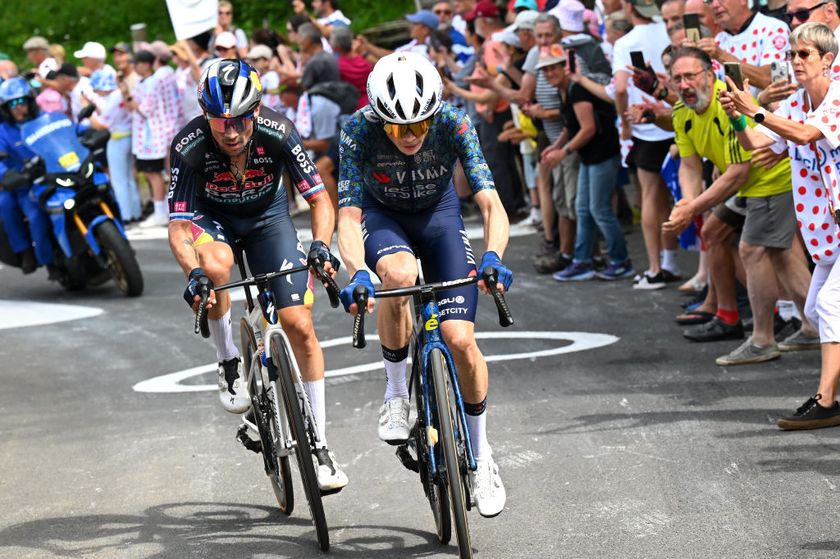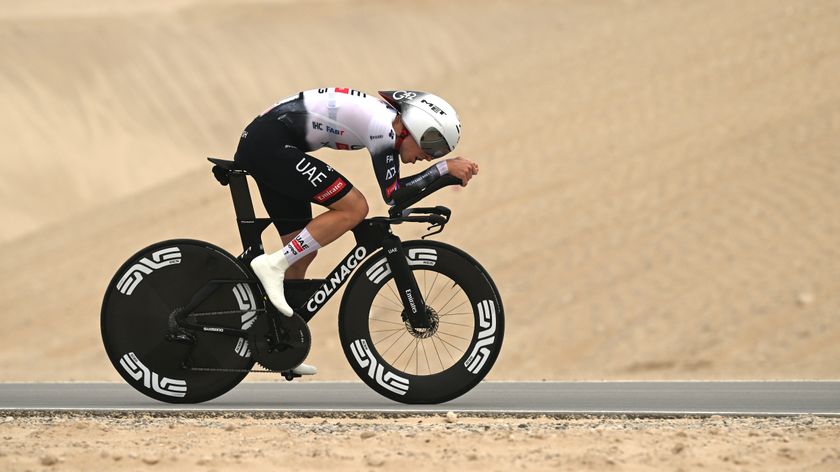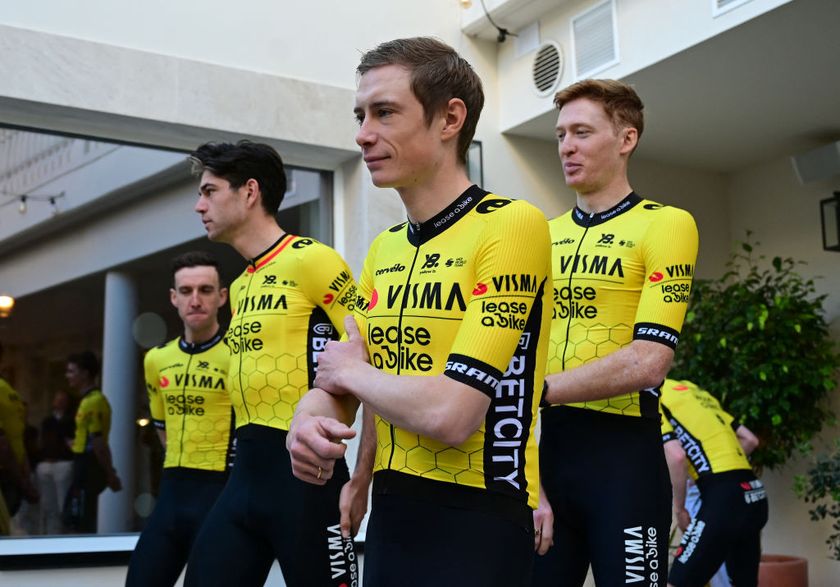Stetina: I almost quit cycling in April
American on putting his racing career back on track, Contador and taking his chances





There was a point during this season in which Peter Stetina came close to hanging up his wheels and retiring. The long and agonising comeback from a career-threatening injury sustained in 2015 had been hard enough, but when almost the entire peloton began riding away from him during the spring, he started to wonder if he was fighting a losing battle.
And who would blame him? Stetina, as has been well documented, fractured his tibia, kneecap and four ribs in a horrifying crash at the Tour of the Basque Country. Many doubted he would return to the sport but the gutsy American recovered and signed a one-year deal at Trek-Segafredo for 2016. On the face of it, the comeback seemed complete but the reality was far different.
“I almost quit in April,” Stetina tells Cyclingnews in the lobby of a Spanish hotel Trek have taken over for most of December.
“I was pack fodder and being dropped with sprinters when I should have been there on the climbs. It just wasn’t coming back and I was tired because I hadn’t done stage racing for so long. It was so hard to get that back. I was at this point in April where I was exhausted and getting canned in every race. It just wasn’t happening and my wife said to me, ‘Well you’ve told the team that California is your goal and they’ve given you that, so at least go through with that and see how it goes.’”
More from the Trek-Segafredo team camp
- Contador to make Trek-Segafredo debut at Ruta del Sol
- Mollema: I'm aiming for the Giro d'Italia before supporting Contador at the Tour
- What makes John Degenkolb tick?
- Trek-Segafredo aims to be number one team in the world in 2017
A glimmer of light
If Stetina’s career as a pro cyclist appeared touch and go, he certainly wasn’t letting on at the time. In the build-up to California he talked up his excitement at heading to the race. Behind the scenes things were very different, however. A bad race and the 29-year-old could have stopped entirely.
“Heading into Cali, I did Catalunya and that was bad. That was just survival. At Pais Vasco I could help Bauke Mollema a little bit with positioning but I was still pack fodder and nowhere near where I used to be. At Romandie there was a bit of a glimmer but I was still getting dropped with 50 guys going up the road. It wasn’t where I should be in the sport and I knew that all the other guys still had their powder dry. I had put more into my rehab than most guys put into their training. I’d sacrificed everything for that and was still getting shit canned. You start to wonder and think maybe it’s time to do something else.”
Get The Leadout Newsletter
The latest race content, interviews, features, reviews and expert buying guides, direct to your inbox!
At California, Stetina didn’t have to wait long for things to click into gear. Back on roads he calls his ‘playground’ and with the team’s backing, he secured second place on the stage to Santa Barbara County. It propelled him into second on GC, a position he would retain until the time trial at Folsom saw him drop out of the top ten. A crash spoiled his GC adventure late on in the race but the glimmer of light he had seen at Romandie had turned into a beaming ray.
“It went great, even though I had a horrible GC result and crashed but that mountain result showed that I was back. My wife later told me that if that race hadn’t gone well I probably would have stopped.”
If California had been a turning point then making the team’s Tour de France line-up was another forward step. Stetina’s last appearance at the race had come in 2014, when he had stewarded Tejay van Garderen to a top five place. Although not quite back to his best this time around, Stetina provided Trek’s Mollema with much-needed cover in the mountains. He came out of the race with 70 race days by the end of July – a number he had not reached since 2014, and that had been over the duration of an entire season.
“I’m content with the year,” he says. “I had specific goals and they were to do something big at California. I showed that I was back in the right way at that race and then I wanted to make the Tour de France team. When I was coming back from my accident, if you had told me that I was going to be contention for the biggest stage in California, make the Tour team and have a full season, I would have signed away in a heartbeat.
“I was still lacking that big result, that California almost was, and I was still a little behind my old best but I made up for that and I think it was a successful season. Coming into the year there was always some hope but the trainers told me that it would be at least a year for me to come back from the injury. At the same time everyone is getting better because the bar doesn’t ever stay still. They told me that I needed to race a lot and that I needed to simply bang my head against the wall, a lot. This was more of a diesel year and getting in the volume rather than hitting the high revs. I raced myself tired for months on end. I was never really great at any one point but I was consistent enough to help our leaders throughout.”
With the bulk of his rehabilitation now behind him, Stetina explains how he is ‘excited to be having a normal winter’ of long and steady rides back in the US. But if normality has been restored it has only added to the growing expectations the climber is putting on his own shoulders for next year.
“I still have individual goals. I’m not a super jaded veteran yet,” he jokes. “Okay, maybe I’m halfway there but honestly I’m still hungry and I see that the team’s success is my success and I get really excited by that. I want to balance going for a personal result at something like California, while still helping in the Giro or the Tour. I’ve never done the Vuelta before, and on paper that really suits me.”
The Contador effect
The signing of Alberto Contador has given everyone at Trek Segafredo a spring in their step this winter and Stetina is no different. In the past he has worked for Contador’s rivals but next year will see the American ride in support of the former Tour de France winner.
“Alberto arriving, it makes us contenders in every race that we go to. It’s also good for Bauke because he had a lot of pressure in 2016. At every race we went to he had to score those WorldTour points, so it’s good that they can share the point game together alongside the Classics team.”
“For me, Alberto coming to the team is a great thing. I’ll be there in the mountains trying to support him when the TV cameras are around. That’s my job and I’m really happy to do it.
“I want to get a result for myself and win a race. Take a stage in Cali or another of the US races. I see them as my playgrounds. I want to be back to climbing with the top 20 or 15 at the Tour, and supporting really deep into the mountains. I did that this year but I want to take it to the next degree.”
So when you turn on the television next July and see Stetina working his Trek socks off for Contador, just remember, he’s the guy who has probably come the through most just to be there.
Daniel Benson was the Editor in Chief at Cyclingnews.com between 2008 and 2022. Based in the UK, he joined the Cyclingnews team in 2008 as the site's first UK-based Managing Editor. In that time, he reported on over a dozen editions of the Tour de France, several World Championships, the Tour Down Under, Spring Classics, and the London 2012 Olympic Games. With the help of the excellent editorial team, he ran the coverage on Cyclingnews and has interviewed leading figures in the sport including UCI Presidents and Tour de France winners.
Most Popular







